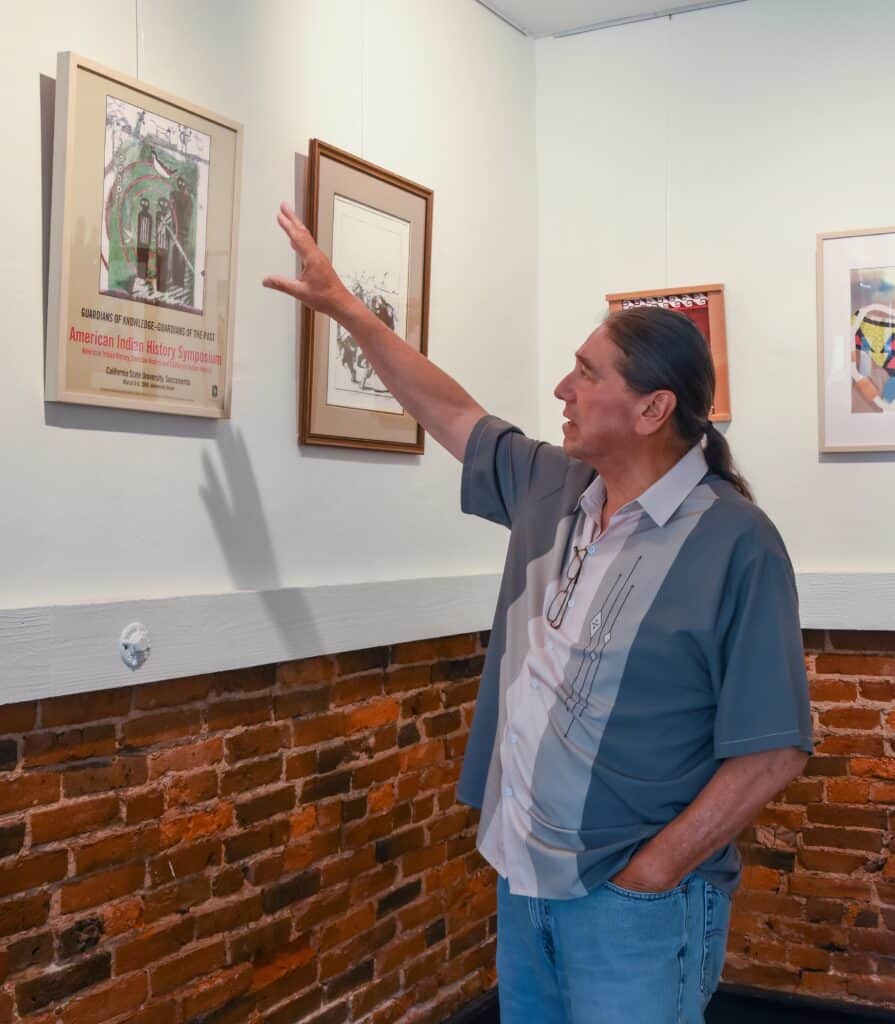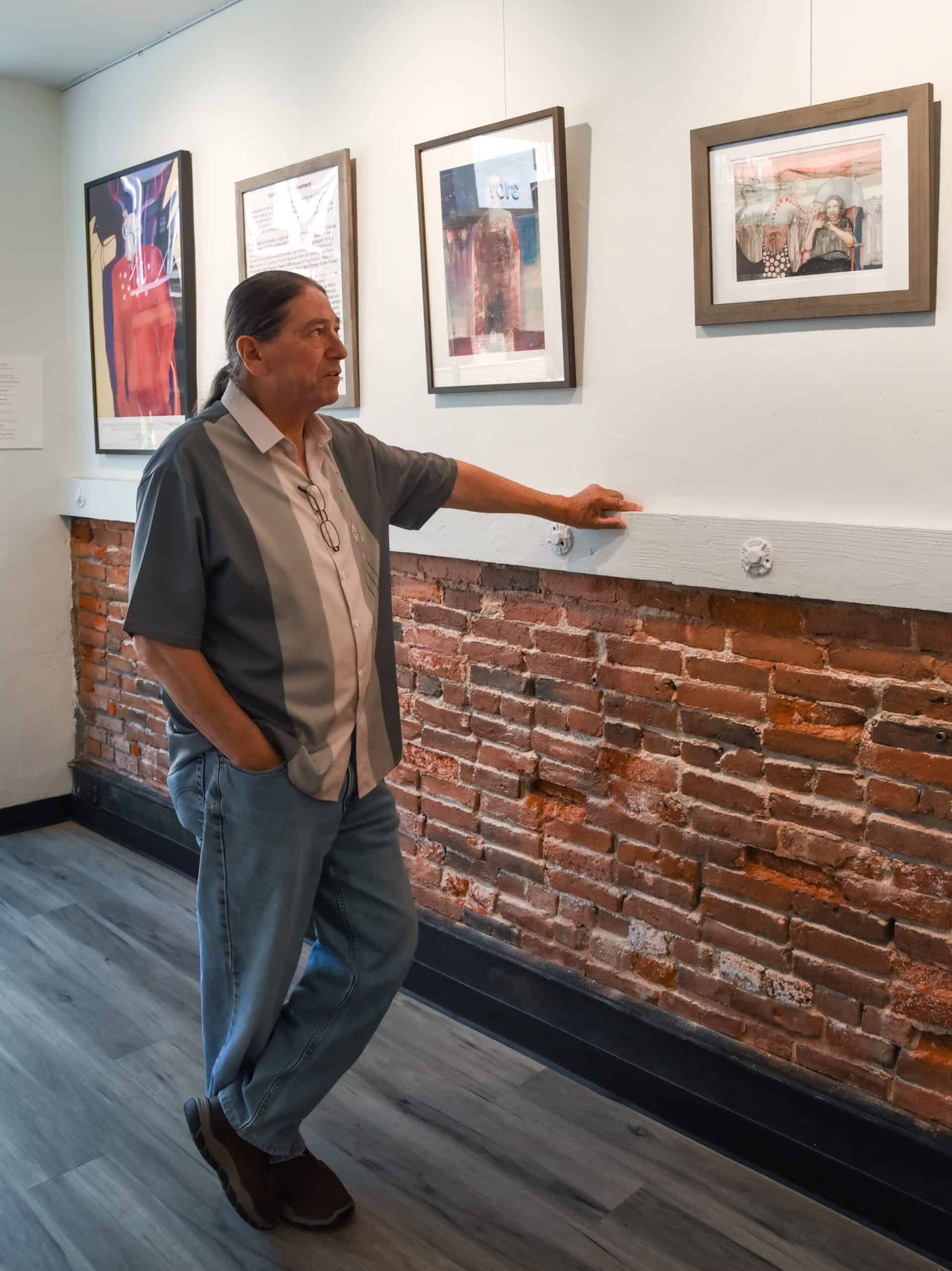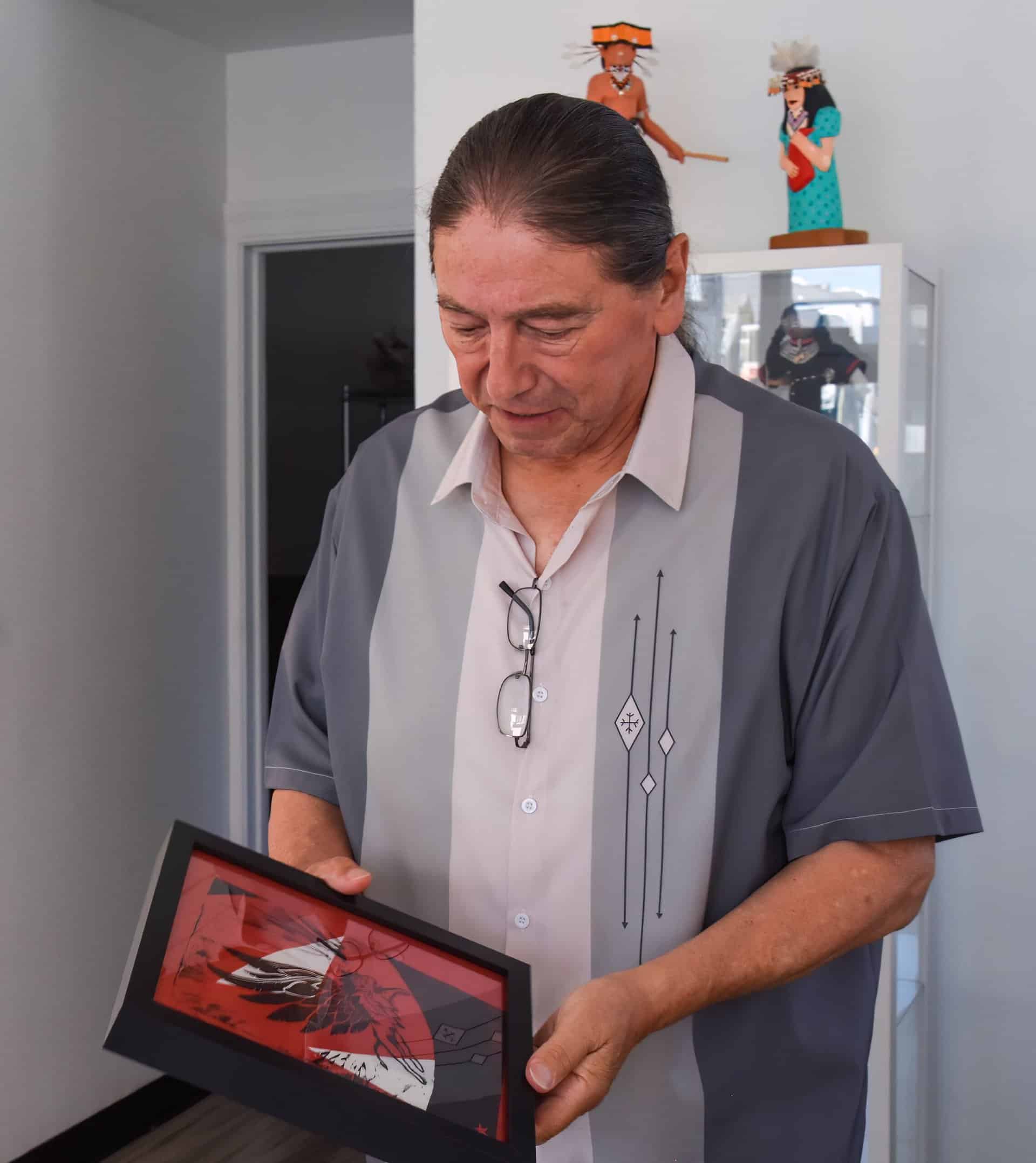James Marquez




James Marquez, Director of Center Street Gallery and the Native American Center for Arts and Culture, sits facing the window of the gallery as a I interview him. The gallery, located at 3182 Center Street, across from City Hall in Downtown Placerville, has large windows that disclose a view of a bustling section of Main Street. Firetrucks and ambulances speed onto the freeway, trucks load and unload behind the shops and restaurants on Main Street, and friends of the gallery routinely pass by, offering friendly honks and waves. “I love this spot. I work out of here a lot now. I love to just sit here and watch the world go by,” he says.
James, who has dedicated much of his adult life to the Native community in Northern California, is Lakota and White Mountain Apache. He is the Director of two Native education initiatives: The Foothill Indian Education Alliance, a non-profit, and the Indian Education Center, a County agency. When I ask him about his career achievements, he smiles and redirects the question, speaking instead about the achievements of the community he has served: “We are on our third generation of students… Many have gone to college or been successful in other ways. Their kids come, and then their kids’ kids come, so they must see the value of what we’re doing. In a few years, we will have our fourth generation.”
James has been an artist his entire life. Once, when he was a child, he turned in a worksheet embroidered at the margins with intricate doodles. He received an A, his teacher told him, for the artwork, not the school work. “I kind of cleaned up my act after that,” he laughs. He enrolled in art school, where he found a community of Native artists and a blueprint for a career in the arts. He went on to co-found a graphic design firm in Sacramento, where he worked for 16 years. While he was working at the firm, he made a point of supporting local non-profits and underserved and marginalized communities by offering his services for free.
After leaving the firm and relocating to El Dorado County to become the Director of Indian Education Services, James found even more rewarding opportunities for service. When the program outgrew its limited accommodations, he helped it expand again, and again, and again—first adding an ancillary location for workshops and classes, then forming the Foothill Indian Education Alliance in order to receive grant money for operations.
Finally, in 2021, James founded the Center Street Gallery, where he hosts “Family Gatherings” for Native people of all ages and a wide array of classes and workshops for young people and local teachers. “We have wide open spaces, tables and chairs,” he says, gesturing around the Gallery. “Within 10 minutes it becomes a classroom.” The Gallery also hosts exhibitions, which are curated with the help of Sigrid Benson, of Concept: Art+Movement. These exhibitions are open to the public and often feature artist talks on Third Saturday Artwalks.
As he did regarding his career achievements, James points to his Native community when I ask him what inspires him. “People. The people that I have met along the way. I like to launch people in a direction that maybe they didn’t even realize they had the talent to go in. The arts cost a lot of money, sometimes, and people don’t have the means for it. Having a space where instruction and supplies and equipment are free during the class—that opens doors for people.”
James will be retiring from his County positions, but he will continue to serve as the Director of the Center Street Gallery. Retirement will give him more time to focus on his own art and to expand the scope of the Gallery’s service to the Native community. It will also give him more time to be with that community. “I just love seeing people. The elders come here and work on stuff and just talk and laugh for hours. It’s hard to have a bad time when they’re around.”
